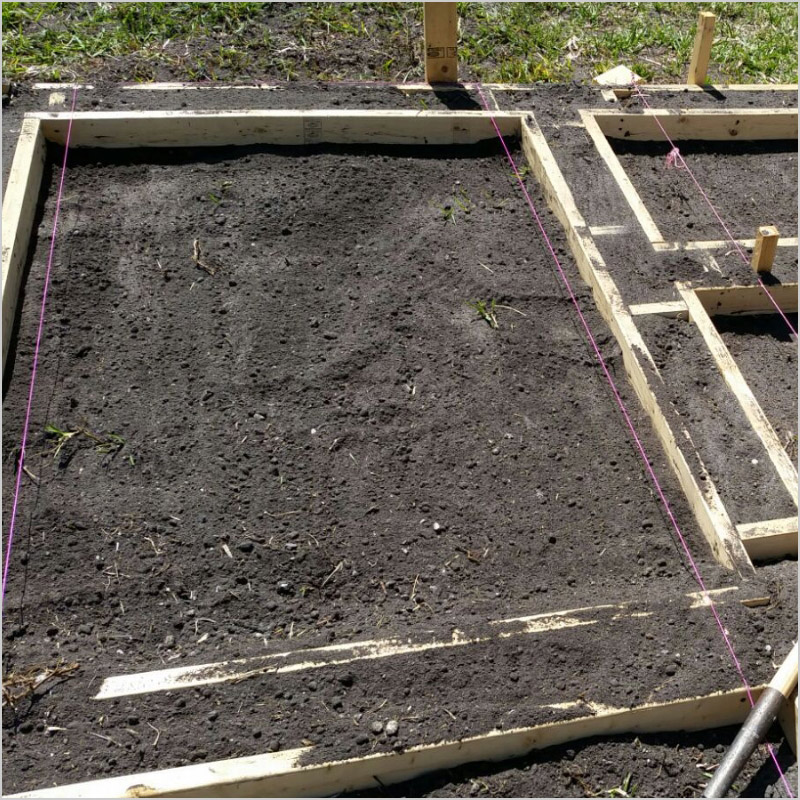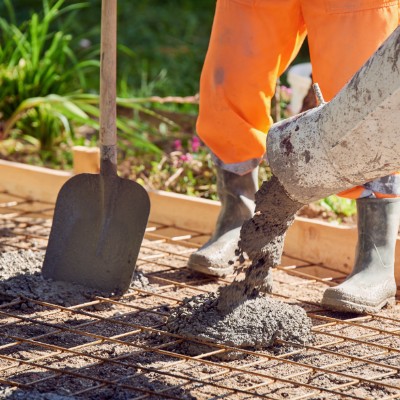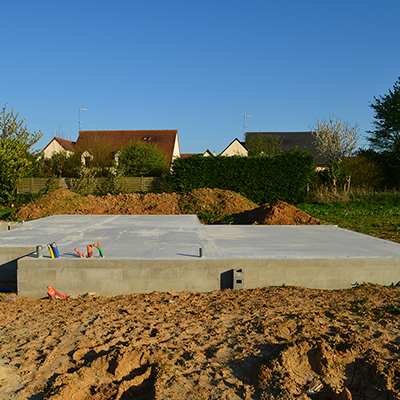When to Remove Concrete Forms
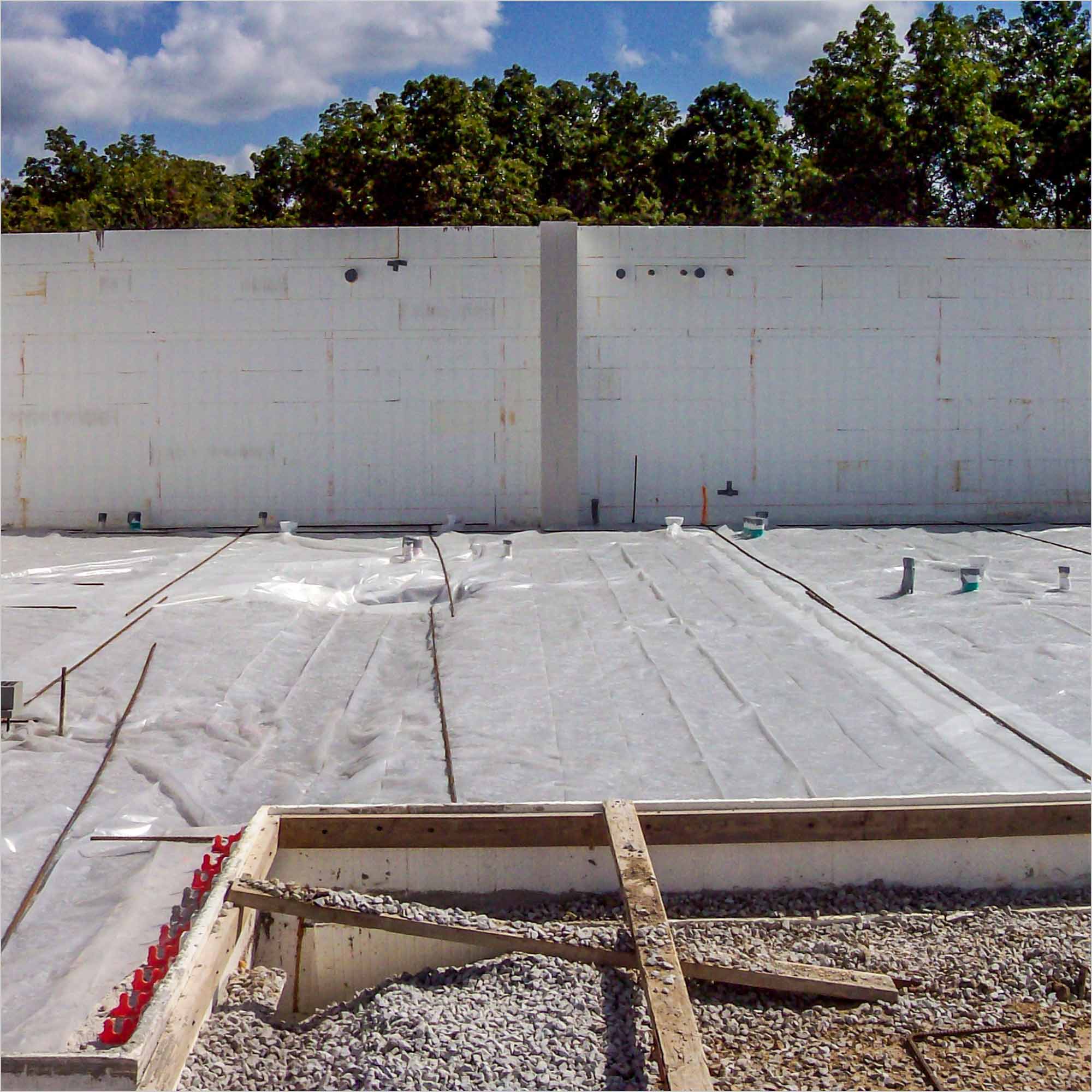
Last updated August 12, 2024
Once you’ve poured concrete, timing is everything. If the concrete dries too quickly, it can crack or fail to cure properly. If you remove the concrete forms too soon, you can damage the concrete slab. These errors have no quick fixes.
This guide reviews ways to make concrete cure effectively, how long to let concrete cure and when to remove concrete forms.
Table of Contents
How to Cure Concrete
How Long Does Concrete Cure?
How Soon Can You Remove Concrete Forms?
More Tools. More Products. More Perks.
How to Cure Concrete
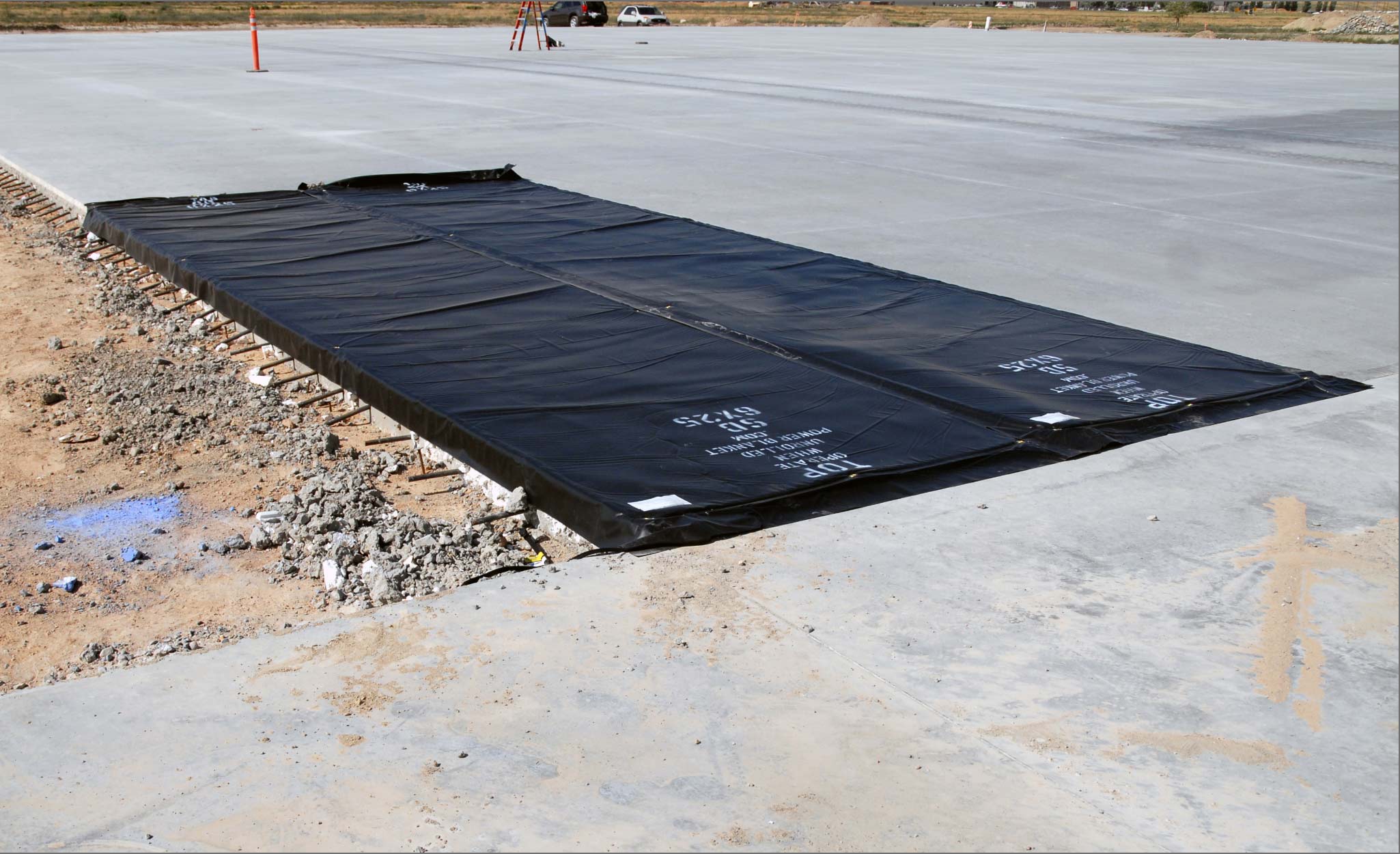
Concrete forms can be removed 24-48 hours after the concrete has been poured and finished. The use of water curing and curing compounds are two ways to ensure that a fresh concrete slab retains enough moisture to achieve its desired strength and durability. Concrete curing can take seven days to reach 70% of its strength.
Water curing involves keeping the concrete surface moist, so it does not dry out before the concrete has adequately cured. Water curing leads to stronger concrete but requires more steps than using a curing compound.
- Do not begin wet curing your concrete until after the surface water evaporates from the top of the slab. This can take about an hour.
- Cover the slab with a light-colored fabric sheet of burlap or cotton. Make sure all the concrete is covered.
- Use a hose or sprinkler to soak the surface of the fabric. Do not soak the fabric enough to form puddles.
- Spread a plastic sheet over the fabric to lock in the moisture and encourage curing. Secure the plastic at the corners to keep it from blowing away.
- Rewet the fabric once a day for seven days. If you have no plastic sheet, rewet the fabric whenever it dries out, which can be more than once a day.
- Remove the fabric after seven days and allow the concrete to dry normally.
Curing compounds are soluble emulsions that ensure that the concrete retains moisture long enough to cure.
- Wait until the surface water on the fresh concrete has evaporated from the top of the slab.
- Apply an even layer of the compound across the entire surface with a paint roller or sprayer.
- Allow the compound seven days to cure.
- Depending on the brand, you may need to remove the compound residue with a wire brush.
Curing is most effective at temperatures above 50 degrees, so spring and summer can be the best times of year to pour concrete. If temperatures drop below 50 degrees, consider covering the slab in concrete insulating blankets to keep the curing process from slowing down or stopping.
Pro Tip: When wet-curing concrete, pre-soak new fabric with clean water to prevent solvents or contaminants from staining concrete. Make sure the fabric has been thoroughly rinsed before covering your concrete surface.
How Long Does Concrete Cure?
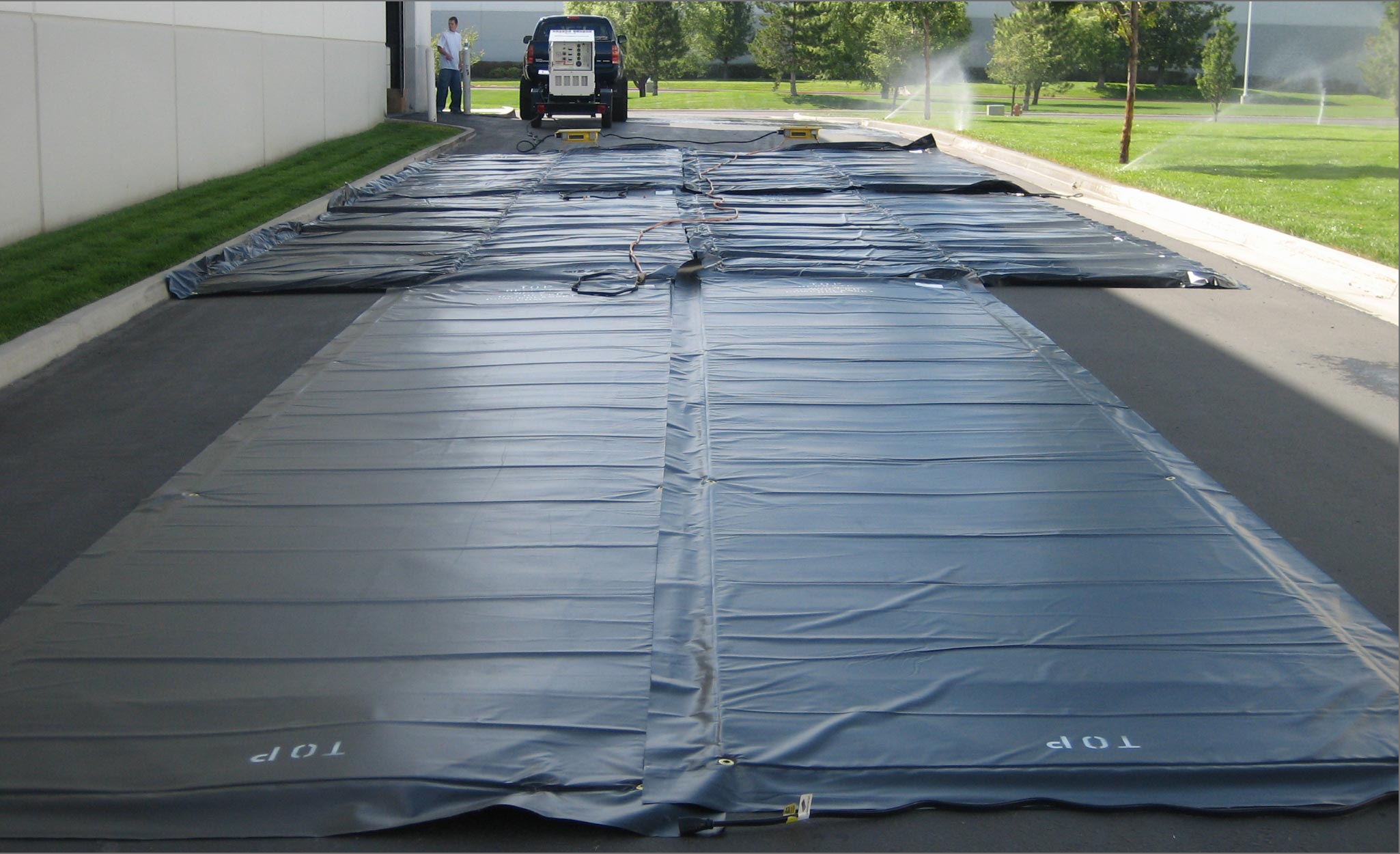
Concrete can take at least 28 days to fully cure and longer to fully dry. A rule of thumb suggests that concrete takes about 30 days to dry for every inch of slab thickness.
The curing time for 4-inch concrete slabs is typically seven days until the slab reaches 70% of its compressive strength.
Consider this timeline after pouring and finishing the concrete to know how long it takes concrete to cure.
- 1 hour: After the concrete surface dries, apply curing compound or damp fabric for water curing.
- 24-48 hours: Concrete should be solid enough to remove the formwork and support foot-traffic without leaving footprints.
- 7 days: Concrete cured to 70% of strength and solid enough to support light vehicles such as bicycles. You can stop water-curing under most circumstances.
- 14 days: The concrete should be solid enough for car traffic if needed.
- 28 days: Minimum time for concrete to fully cure.
- 120 days: Approximate time for a 4-inch slab to fully dry.
The American Concrete Institute recommends minimum curing times for these types of concrete to attain 70% of their strength:
- ASTM C 150 Type I cement: 7 days
- ASTM C 150 Type II cement: 10 days
- ASTM C 150 Type III cement: 3 days
- ASTM C 150 Type IV or V cement: 14 days
- ASTM C 595, C 845, C 1157 cements: Variable
How Soon Can You Remove Concrete Forms?
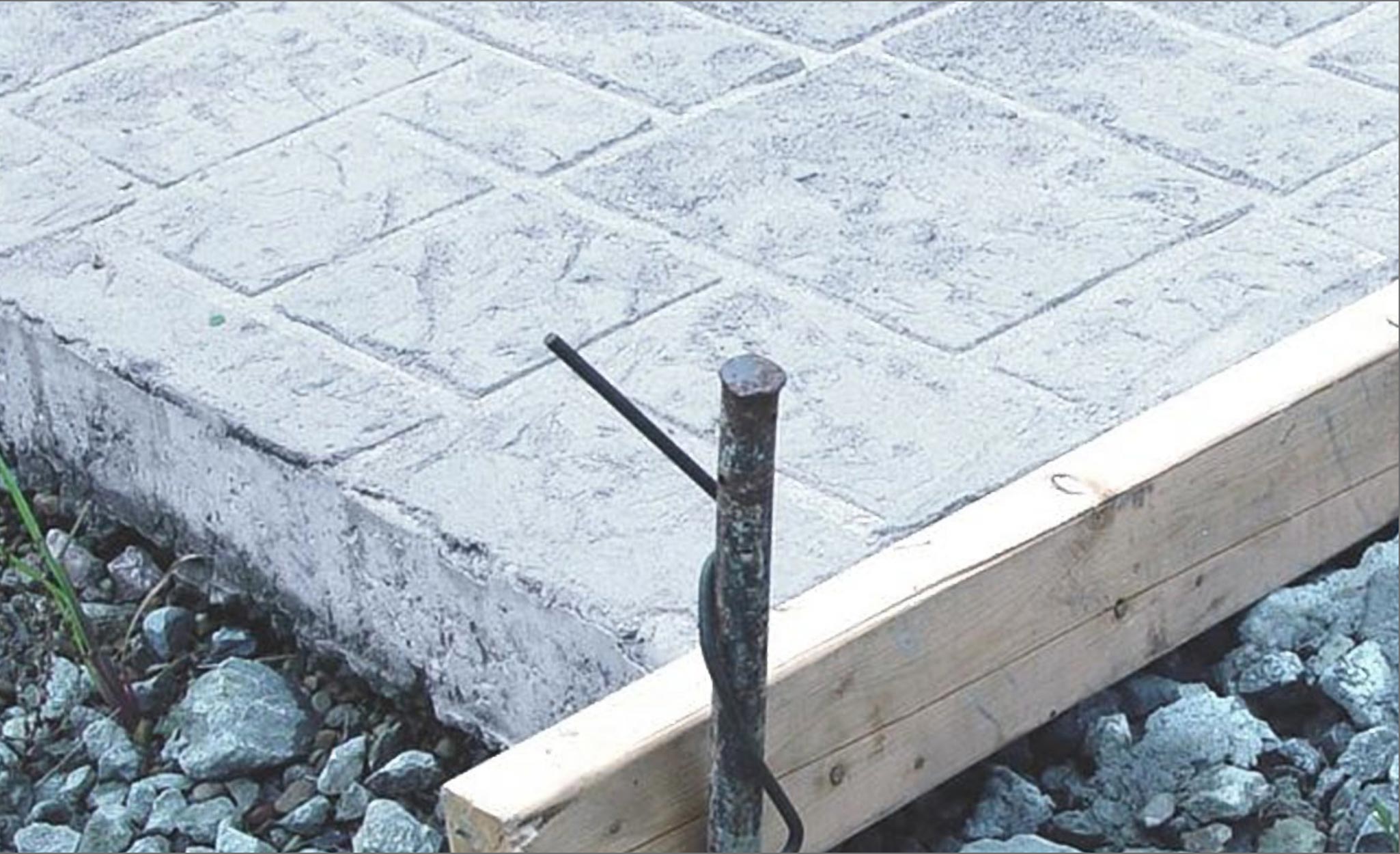
After pouring and finishing the slab, you should wait 24-48 hours before removing concrete forms. You can remove the formwork once the concrete has enough strength to keep it from cracking. Concrete naturally contracts as it cures, so it should pull away from the forms and make them easier to remove.
Follow these steps when removing concrete forms:
- Remove all stakes and kickers that support the formwork. If the site slopes, start at the top.
- Remove any nails or screws that fasten the boards.
- Gently tap along the top and side of the board with a hammer to loosen the form.
- Pull the boards away from the slab, taking care not to chip or scar the concrete surface.
- If needed, use a wooden wedge or pry bar to separate the formwork from the slab. Do not gouge the concrete.
- Clean and store reusable forms in a dry location.
Pro Tip: Some wood formwork may have trace amounts of chemicals that can discolor the concrete if removed too late. Clean formwork thoroughly before use. If hardened concrete has discolorations, try flushing the area with hot water and scrubbing with a stiff brush.
More Tools. More Products. More Perks.

Be more competitive and boost your bottom line with Pro Xtra, The Home Depot's loyalty program built for Pros. Sign up today to access the enhanced Pro Online Experience, built with the online business tools and time-saving features Pros need.
Create a quote, prepare bids and lock in pricing using a free Pro Xtra account during your concrete project. Simply fill your online shopping cart, log in to your Pro account and use the “Create a Quote” field at checkout.






